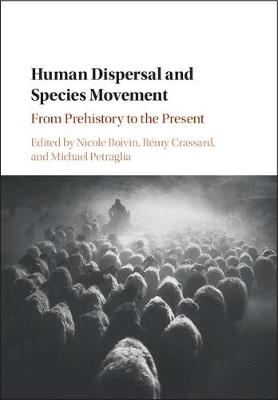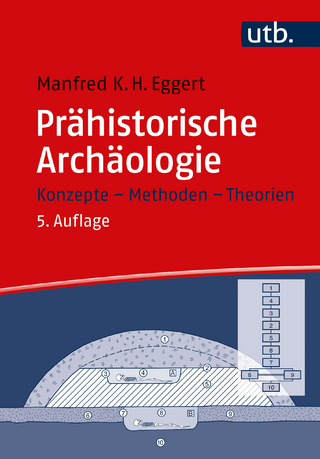
Human Dispersal and Species Movement
Cambridge University Press (Verlag)
978-1-107-16414-7 (ISBN)
How have humans colonised the entire planet and reshaped its ecosystems in the process? This unique and groundbreaking collection of essays explores human movement through time, the impacts of these movements on landscapes and other species, and the ways in which species have co-evolved and transformed each other as a result. Exploring the spread of people, plants, animals, and diseases through processes of migration, colonisation, trade and travel, it assembles a broad array of case studies from the Pliocene to the present. The contributors from disciplines across the humanities and natural sciences are senior or established scholars in the fields of human evolution, archaeology, history, and geography.
Nicole Boivin is Director of the Department of Archaeology at the Max Planck Institute for the Science of Human History, Jena, Germany. Her archaeological research is multi-disciplinary, and cross-cuts the traditional divide between the natural sciences and humanities. She is author of Material Cultures, Material Minds: The Role of Things in Human Thought, Society and Evolution (Cambridge, 2008). Rémy Crassard is a permanent Research Fellow at the National Centre for Scientific Research (CNRS) in Lyon, France. He is also directing the Globalkites Project, focused on the interdisciplinary study of desert kites across the world, and especially in the Middle East and Central Asia. His research addresses the dispersal and cultural evolution of modern humans during the Palaeolithic and Neolithic periods through the study of the lithic industries in the Arabian Peninsula. Michael Petraglia is Head of the Human Evolution, Environment and Culture group of the Max Planck Institute for the Science of Human History, Jena, Germany. He is the author of 150 journal articles and book chapters and co-editor of eight books and special journal issues, including The Evolution of Human Populations in Arabia: Palaeoenvironments, Prehistory and Genetics (2009) and The Evolution and History of Human Populations in South Asia: Inter-disciplinary Studies in Archaeology, Biological Anthropology, Linguistics and Genetics (2007). His research interests include the biological and cultural evolution of hominins and the dispersal of human populations out of Africa.
Introduction: 1. Human and human-mediated species dispersals through time: introduction and overview Nicole Boivin; Part I. Origins: Species Movements in the Pleistocene: 2. Carnivore guilds and the impact of hominin dispersals Margaret E. Lewis; 3. Pleistocene hominin dispersals, naïve faunas and social networks Robin Dennell; 4. Hominins on the move: an assessment of anthropogenic shaping of environments in the Palaeolithic Michael D. Petraglia; 5. Reconceptualising the palaeozoogeography of the Sahara and the dispersal of early modern humans Nick A. Drake and Roger Blench; Part II. Across the Water: Species Movements by Coast and Sea: 6. Coastlines, marine ecology, and maritime dispersals in human history Jon Erlandson; 7. Breaking down barriers: pre/historic dispersals across island Southeast Asia, New Guinea and Australia Tim Denham; 8. The last great migration: human colonisation of the remote Pacific Islands Terry Hunt and Carl P. Lipo; Part III. Complexity: Species Movements in the Holocene: 9. Dispersals, connectivity and indigeneity in Arabian prehistory Rémy Crassard and Lamya Khalidi; 10. Reconstructing migration trajectories using ancient DNA Greger Larson; 11. Out of the Fertile Crescent: the dispersal of domestic livestock through Europe and Africa Melinda A. Zeder; 12. Adapting crops, landscapes, and food choices: patterns in the dispersal of domesticated plants across Eurasia Dorian Fuller and Leilani Lucas; 13. Tracing the initial diffusion of maize in North America Bruce D. Smith; 14. Proto-globalisation and biotic exchange in the Old World Nicole Boivin; Part IV. Invasion: The Movement of Invasive and Disease Species: 15. Invasive eusocieties: commonalities between ants and humans Patrizia d'Ettorre; 16. Species dispersions in time, space, and mind: the invasive aliens in context Marcus Hall; 17. Disease dispersals in human history at multiple time scales Mark Achtman; 18. Early malarial infections and the first epidemiological transition James L. A. Webb, Jr; 19. The globalisations of disease Monica Green; 20. Modern day population, pathogen and pest dispersals Andrew J. Tatem.
| Erscheinungsdatum | 19.07.2017 |
|---|---|
| Zusatzinfo | 19 Tables, black and white; 8 Plates, color; 23 Maps; 3 Halftones, black and white; 36 Line drawings, black and white |
| Verlagsort | Cambridge |
| Sprache | englisch |
| Maße | 185 x 260 mm |
| Gewicht | 1380 g |
| Themenwelt | Geisteswissenschaften ► Archäologie |
| Geschichte ► Allgemeine Geschichte ► Vor- und Frühgeschichte | |
| ISBN-10 | 1-107-16414-1 / 1107164141 |
| ISBN-13 | 978-1-107-16414-7 / 9781107164147 |
| Zustand | Neuware |
| Haben Sie eine Frage zum Produkt? |
aus dem Bereich


